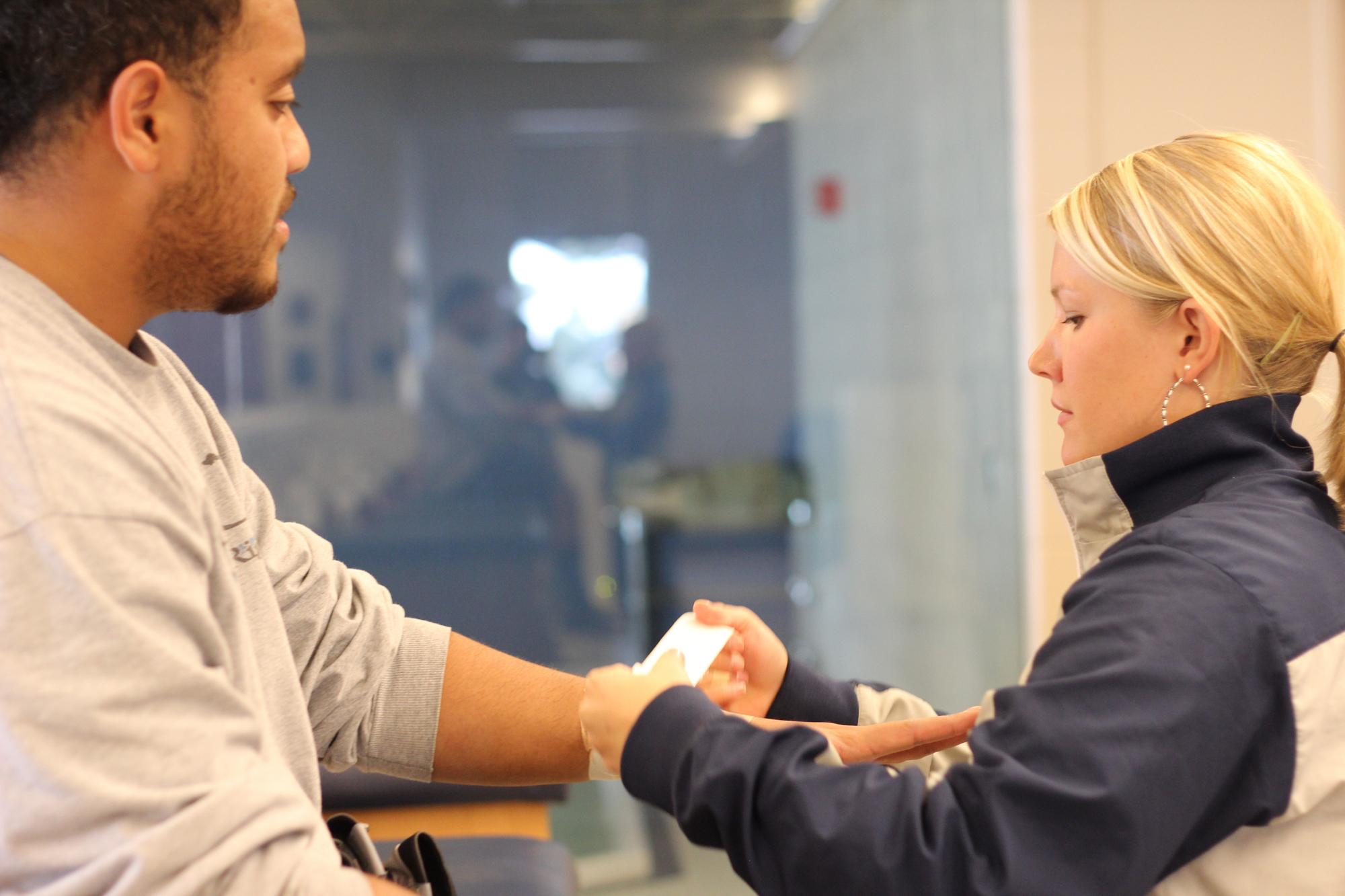How to train an Aggie
Dale Mildenberger sits in his office in the Sports Medicine Complex that bears his name. Mildenberger has worked in the athletic training field for more than 40 years and is USU’s head athletic trainer.
After acting as a “daily provider” for athletes, he said the majority of his job now involves administrative duties, which consist mainly of quelling larger issues.
“If they were easy problems, they would have been solved by somebody else in my staff before it got to me,” Mildenberger said.
However, he said the hands-on aspects of athletic training are still a large part of his daily life.
“(Mildenberger) is still very active and involved in the health care of the athletes and knowing who’s got what injury going on,” said Josh Johnson, a second-year graduate student and athletic training assistant.
There are 11 graduate assistants giving care to athletes during sporting seasons.
“They never work the same sport two years in a row. We try and give them as broad an experience as they can in two years,” Mildenberger said.
Graduate assistants are assigned to a team for the entire season and travel to the away games to provide assistance, he said. The assistants attend all athletic practices and games to give players water and provide care in the event of an injury.
Adam Raikes, one of the graduate student trainers said, “We watch to make sure the injuries aren’t occurring, and we deal with anything that does come up. Ninety percent of the job is standing around, waiting for something to happen and hoping it doesn’t.”
During Saturday’s football game versus University of Nevada, no serious injuries occurred to USU players, but athletic trainers did go on the field to check on players, such as running back Michael Smith.
“A lot of people see us as … glorified waterboys because that’s what they see us do a lot,” Johnson said.
However, keeping the players hydrated is the responsibility of one trainer, not the whole group. They are also in charge of taping and bracing the players’ ankles and other joints.
Johnson said if players “don’t wear braces, they usually do come and get their ankles taped,” and roughly 40-50 athletes take advantage of this service.
Johnson said it takes him between one and two minutes to tape an ankle. A lot of technique goes into it, he said, and pre-taping, applying heel pads, heel locks and stirrups are some of the things that go into the taping process. With most players needing both ankles taped, Johnson said, it adds up to a lot of work over the course of a season.
Graduate assistants also perform physical evaluations and treat student-athletes after injuries.
During an evaluation, assistants assess and identify weaknesses and abnormalities in various body parts, Johnson said. Then they recommend exercises and modalities to do outside of the training center. These exercises are done to prevent injury by working on muscle strength and flexibility.
One of Johnson’s favorite parts of being an athletic trainer, he said, is being involved with the athletes from the day they’re injured to the day they return to play.
Between these events the rehabilitation process includes different modalities, such as icing, E-stim — electrical stimulation, a method of electro-therapy — and the “game ready” procedure, which essentially combines rest, ice, compression and elevation of the injured area.
Special pools allow athletes to work muscles while applying less weight to the injured area.
“I love the job,” Raikes said, “I love what I’m doing. I get to work with athletes. I get to watch sports for a living.”
– todd.jones@aggiemail.usu.edu

